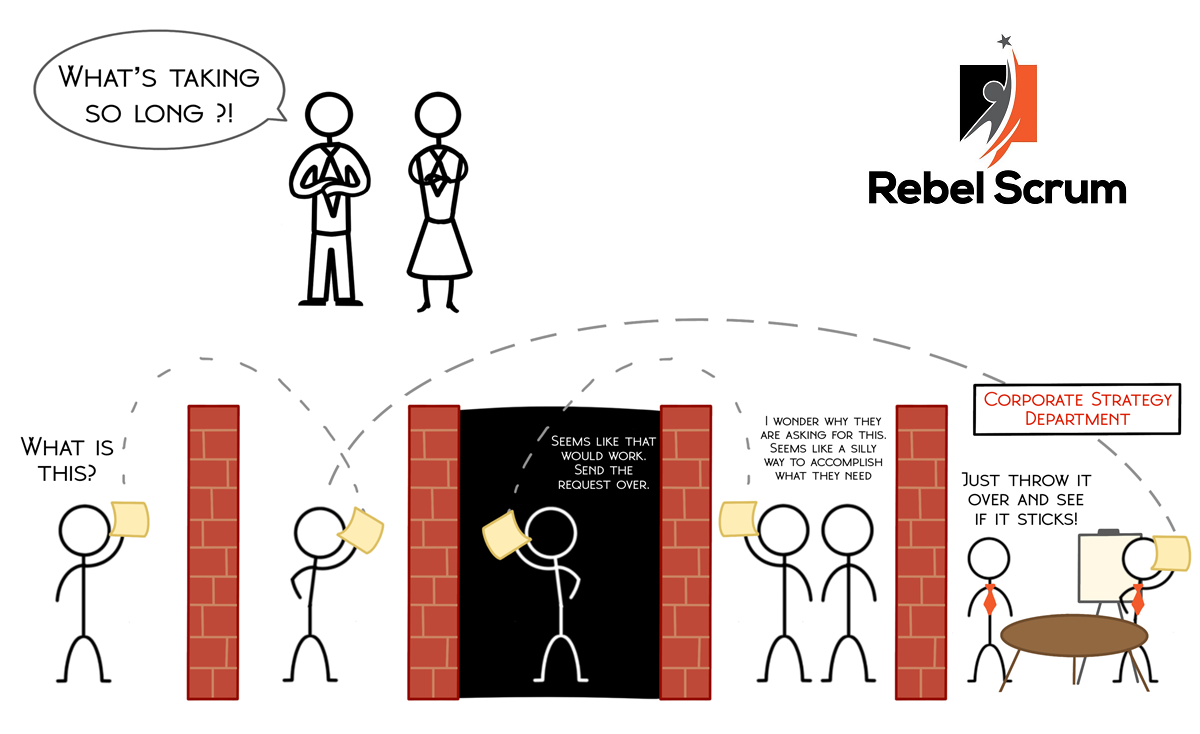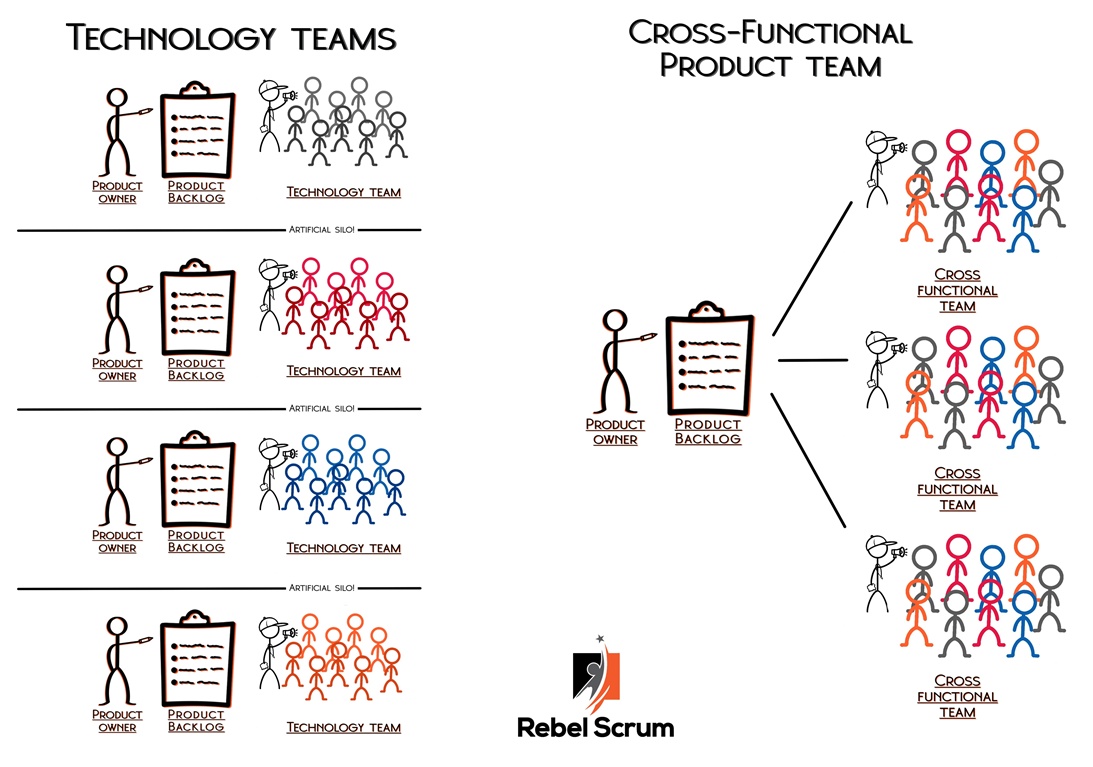
Handoffs happen when teams are told to “be Agile” but are organized according to an old way of thinking. Instead of assembling cross-functional teams focused on delivering end-to-end value, many organizations organize Agile teams into technology silos—backend, frontend, database, dev ops - each focused narrowly on their own technology area. While it may seem "efficient", what this really means is that teams have built-in walls to value delivery.
When one team finishes their slice of the solution they pass it to the next team. Each handoff introduces latency, ambiguity, and fragility. Each step in the sequence becomes a single point of failure. And the more handoffs in the chain, the longer it takes to deliver anything of value.
From Projects to Permanent Teams: What We Forgot
Remember how we used to run projects? We brought together people from across disciplines—designers, developers, testers, product leads—and co-located them to focus on a single goal. The goal was clear: deliver something meaningful, together.
As Agile gained traction, companies shifted to forming permanent teams rather than temporary project groups. That’s a good thing - stable teams are more efficient over time. But in the transition, many leaders forgot something critical: Agile teams must still collaborate across boundaries to deliver value. Just because a team is permanent doesn’t mean it’s complete. And when we organize them around technology components rather than customer outcomes, we create dependencies. Dependencies demand coordination. Coordination, when fractured, causes handoffs.
Silos, Silos, Everywhere
When you build in silos, you build in handoffs. Silos separate skills, goals, and sometimes even understanding. A team focused solely on API development can’t release a working feature on its own. It must coordinate with the UI team, which must coordinate with QA, which must coordinate with release management… and so on. Each coordination point is a potential delay, a chance for misalignment, or worse, a blame game.
Leaders often believe they’re being efficient by keeping everyone specialized and constantly busy. But what looks like high utilization often masks low throughput. Everyone is “working,” yet nothing is “done.” The system is saturated, but not swift.
The Myth of Efficiency
It’s a common fallacy in management to optimize for local efficiency—keeping every team busy—at the expense of global effectiveness—delivering working software quickly. Think of it this way: A car factory where every station is running 100% of the time, but the final product never ships, isn’t efficient. It’s gridlocked.
This is exactly what silo-based Agile fosters: walls instead of bridges, churn instead of flow. Communication becomes formalized, fragmented, and slow. Teams can't talk directly; they ticket each other. Trust erodes. Learning stalls. And instead of agility, the organization inherits fragility.
Breaking the Handoff Habit
To truly deliver value, we must rethink team structure. Value doesn’t live in the backend or the UI—it lives in the outcome experienced by the customer. So our teams should be organized to own that outcome, end-to-end. Cross-functional, outcome-oriented teams reduce the need for handoffs because they contain all the capabilities required to deliver a feature.

This doesn’t mean every team must do everything. But they should be as cross-functional as possible so that we have people with different skills working together instead of separated by unnecessary barriers to communication. Where integration is needed, so is intentional collaboration—not just contracts between silos.
Conclusion
Handoffs are the hidden drain on your Agile operation. They slow you down, create confusion, and separate people who should be solving problems together. They happen when we prioritize activity over outcomes, busywork over business value, and structure over sense.
If we want true agility, we need to rethink how we structure our teams. Tear down the silos. Build for flow. Only then can we deliver with the speed, quality, and collaboration that Agile promises.
Are you ready to break-out of your silos? Contact Rebel Scrum.
